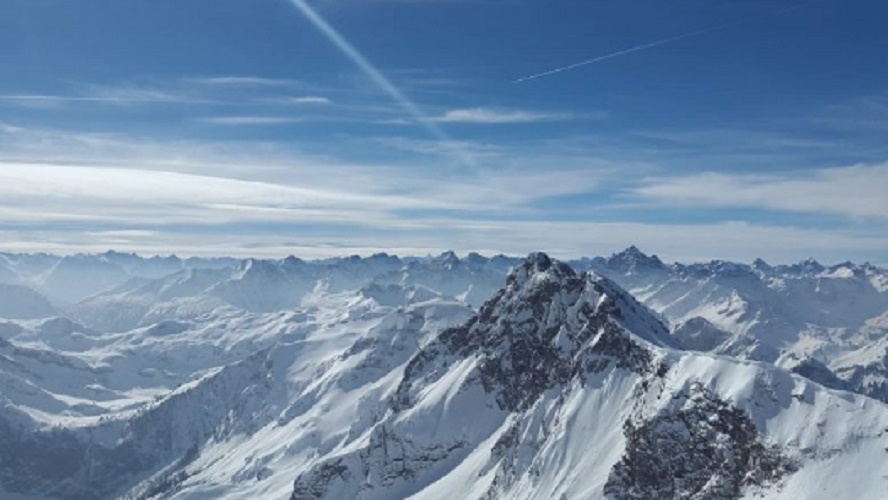What is the weather like?
We explain what the weather is and what types of weather exist. In addition, what are the elements and factors of the climate. Weather.
-
What is the weather like?
Climate refers to patterns of variation in temperature, humidity, atmospheric pressure, wind, precipitation and other meteorological conditions of interest in a given geographical region . The weather tends to be distinguished from the weather , because the first one understands the long-term conditions in the region, while the second one, its state in a short period of time.
The various geographical regions of the world have an associated climate and determined by physical factors and relationships between them, in what is known as the climate system , since they operate in an orderly and reciprocal manner, even in cases of extreme climates. Every climate system is composed of five layers of interaction: atmosphere , hydrosphere , cryosphere, lithosphere and biosphere, each with particular chemical and physical characteristics.
At the same time, the climate can be studied from historical perspectives (paleoclimate) to understand the formation processes of our planet, including the origin of life ; or from projective perspectives, to make predictions and understand the processes launched in environmental matters today.
Climate is an important factor in the planning of human activities , especially in those that require specific and planned environmental conditions, such as agriculture . This is why alterations of climate change and global warming can be so harmful to human life.
-
Types of weather

There are many technical ways of classifying climates, using different scales and with specific applications in the study of the subject . However, the simplest classification of all is that which meets the degree of heat of the climate in question, and distinguishes between three possibilities:
- Warm weather . Those that have higher temperatures constantly, such as the equatorial climate, the tropical, the arid subtropical, and the desert and semi-desert climates.
- Temperate climes . Intermediate instance between warm and cold, with important variations according to the season and a lot of weather variability. Such as the humid subtropical climate, the Mediterranean, the oceanic and the continental.
- Cold climates . Those in which low temperatures predominate throughout the year, such as polar climates, mountain or tundra weather.
-
Weather elements
All weather is made up of a series of elements that are usually measured or evaluated by climatologists to emit predictions. These are:
- Atmospheric temperature . It is the degree of heat or cold that exists in atmospheric air masses , heated mainly by solar radiation.
- Atmospheric pressure . It is the pressure exerted in all directions by the mass of air in the atmosphere, and which greatly affects other climatic elements.
- Winds . The variations of pressure in the air generate displacements of the gaseous mass that we know as wind, and that allow the distribution of energy and heat in the atmosphere more equitably.
- Humidity . It is the degree of water in the gaseous state that has been present in the gases of the atmosphere, which it reaches during its water cycle , when it evaporates.
- Precipitation . The abundance of water vapor in the atmosphere leads it to condense in the form of clouds, which displaced by the wind collide with each other and release their liquid content, in what we know as rain.
-
Weather factors

The climate is determined by the interaction of various factors, such as:
- Latitude . The geographical location of the region whose climate is studied greatly influences the air temperature and the incidence of solar rays, which explains the variation of the seasons and other climatic cycles.
- Altitude . The level of meters above sea level at which a region is found, will affect the variables of atmospheric pressure and atmospheric temperature, according to the rule that states: higher, lower temperature and lower pressure.
- Distance to the sea . The proximity or remoteness of the coast or large bodies of water such as important lakes or large rivers, largely determines the humidity present in the air of a region.
- Ocean currents . The movements of ocean waters redistribute the masses of water on the planet and keep them in displacement, allowing warm and cold waters to alter their position and cyclically affect the atmosphere, providing heat or cold as the case may be.
- Relief . The orientation of the geological shape of the earth’s surface can make a region more prone to drought or moisture, as with mountains, for example: by stopping the wet winds coming from the coast, they absorb moisture and generate dry winds from the other side.
- Wind direction . The atmospheric air mass moves often, allowing hot and cold air to compensate for its effect according to factors such as pressure, geography, etc. Wind action is key in the weather.
-
Weather
Atmospheric time is known to the physical characteristics of the atmosphere at a given time , specifically in the troposphere, where most atmospheric phenomena occur . Thus, temperature, humidity, cloudiness and the degree of movement of the atmosphere are measured, from which it is possible to better understand the climatic dynamics of the planet.





